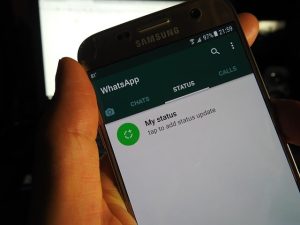Hot Tips for International Mobile App Marketing/Advertising

On our planet, there are about 7000 different languages spoken and the market for mobile apps is growing in all countries and regions of the world.
It is estimated that the download numbers for apps, will be nearly 270,000 million worldwide in 2017.
For companies and app developers who want to showcase their apps in the international scene, there is a brief overview of the most important factors to consider when marketing your app in multiple languages.
1. Find out Target markets
Locate countries with high Smartphone users and think about where your app is to be published.
Search like apps (apps that’s similar to your own in major features and functions) their strengths and weaknesses analyses and highlight the unique features of your own app.
Possibly, you can assess and evaluate the cultural acceptance of the market for
their own app in order to prepare your own app in tune with the culture of the market you’re targeting.

2. Localization
Adjustments of the app to the cultural and linguistic characteristics of the market.
You need to make it translatable in other languages; research on the name of the app you consider whether it is a more appropriate term in the local language for the offered service.
A very good example is the conversion from the “Evernote” app to “Yinxiang Baker” (memory note) in Chinese when the app was expanded to China.
Already in the design of the text fields in the GUI of the app, it should be kept in mind that, you can take texts in other languages in other sizes.
Other elements that must be observed when an app when you localized the app are: date and time format, metadata, symbols and icons, colors, currency formats, graphic design, as well as the
legal texts and their legal security.
3. Translations
The app should support all languages spoken in the country of destination.
Start with the translation with the mother tongue and then add the lesser-used languages gradually.
Approximately 70% of app users are not native English speakers.
According to a study, the number of app downloads increases by 120%, and 26%, once an app is translated into the respective national language.
An app in English, Spanish, and Chinese is understandable for approximately 50% of all app users worldwide.
Languages, where the user’s willingness to buy is higher than average, are Spanish, French, German, Italian, Japanese, Dutch, and Italian.
There are many downloads when the app in Russian, Portuguese or Mandarin is published. So, this should give you a hint.
4. Choice of App Stores
While Google Play and the Apple app store are the favorite download sites in the United States of America and almost all countries in Europe, it’s not always like that in Asia.
For example, Google Play is not available accessible in China, Instead, app developers there use Baidu, which is already the second-largest app distribution channel around the world.
The choice of the distribution channel of the destination country is crucial for success. The user will have to change his download habits to your app download.
5. Stay active on the typical social channels
You need to add your app to the local social networks and allow users to register it via these channels in the app.
For example, China: Renren, South Africa: MXit, Russia: V contacts. If you want to offer users the possibility to log in via Facebook or Twitter, this should be addressed also as country-specific, since this is not in all countries.
6. Regional support teams
As soon as the app in a specific language region is successful, the next thing to do as a developer is to build a local team.
To set up a global team requires a lot of work. But seen in the long term, it really worth the energy you put into it.
Localization by: app Web page, social media channels, and corporate strategy.
Regionalization of: marketing, support, public relations, and legal department.
Applying for a patent at the country level is a major challenge to promote an app worldwide.
But with good research and preparation, international success is entirely possible.







